A low table among the dunes, surrounded by lanterns and flickering candles; a glass of smooth pinot noir and the white sand of a tranquil Tanzanian beach underfoot. Is my first international trip since the pandemic, and I feel serene and relaxed . It is as if the last two years had not happened: everything conveys an air of calm and freedom, from the sound of the ocean to the distant glow of the stars.
In a way, this retreat in Zanzibar, the semi-autonomous island off Tanzania , has taken place thanks to the pandemic. When Susan Neva, who organized my trip with the American company Alluring Africa, realized that there were only direct flights twice a week from my country of residence, India, she suggested that I fly to this island and spend a few extra nights before starting my safari itinerary.
According to Susan, Tanzania offers easy access to an incredible variety of landscapes. If I took advantage of the circumstances and added the beauty of African beaches to the itinerary, my trip would go from exquisite to emblematic. Turns out I not only saved myself the hassle of a twenty-hour layover: most safari travelers visit Zanzibar last to unwind before heading home , but I needed just the opposite. Between the gentle waves and the wind, and almost without realizing it, I got rid of the constant buzz that accompanies life in the city and was able to enjoy nature in a much fuller way.
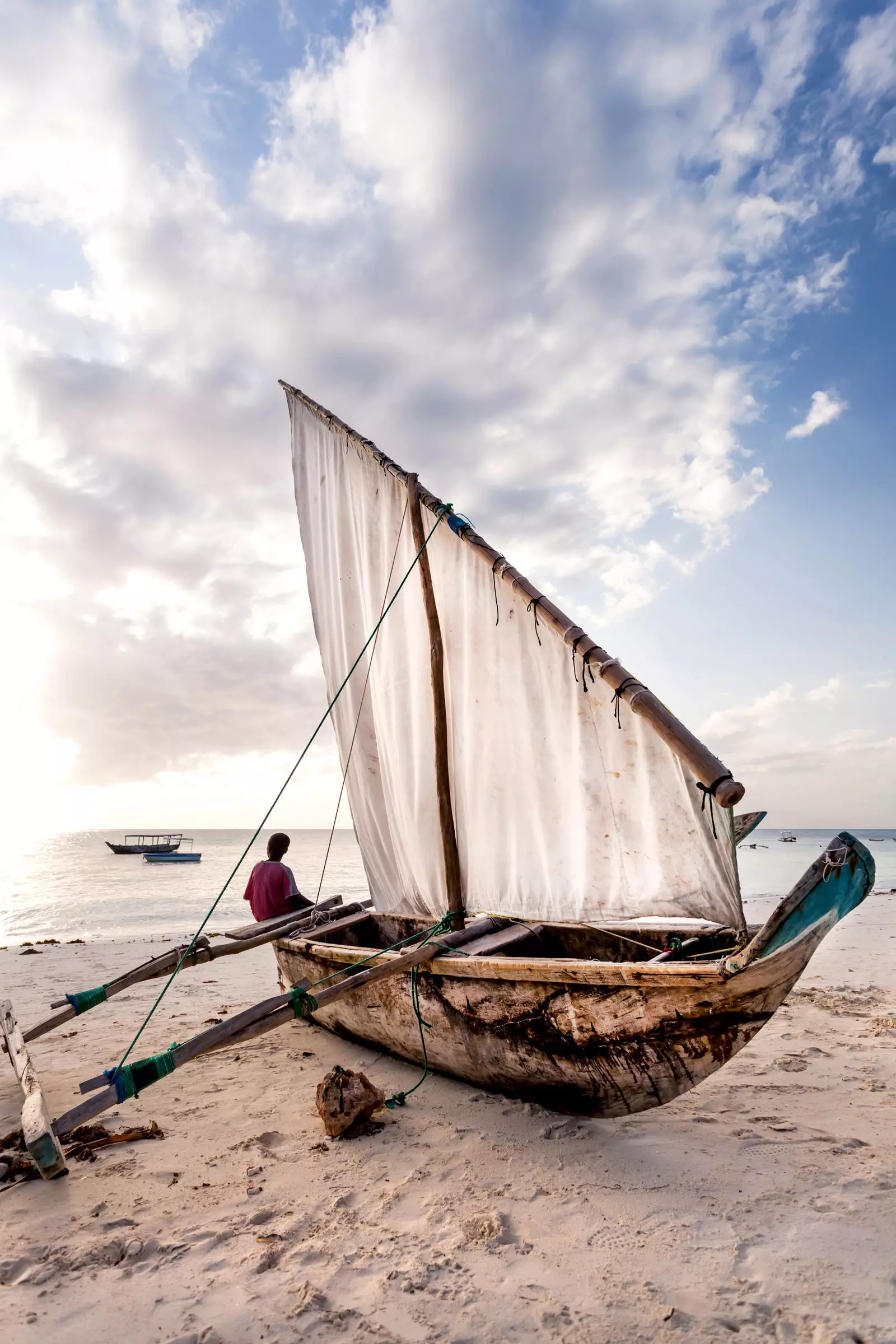
A dhow on the beach in Zanzibar. These boats are usually made from a single, gigantic tree trunk.
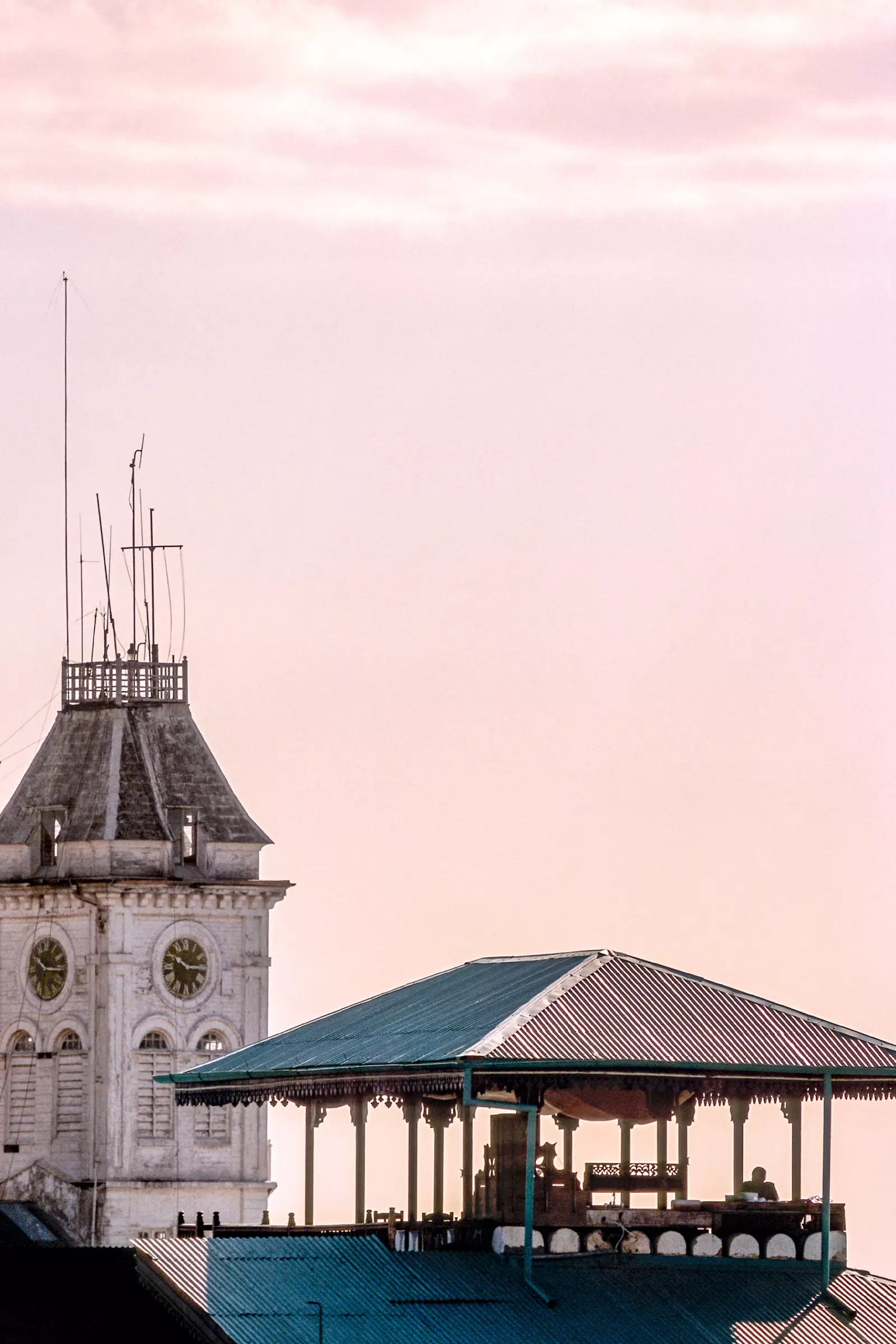
The House of Wonders in Stone Town. Built in 1883, it was the first elevator building in East Africa.
KNOWING THE CITY OF STONE
intrigued me Stone Town, the Stone Town of Zanzibar , with its carved doors, spice bazaars and historic church built on what was once the largest slave market in East Africa; so for the first day of my stay Susan had set me up with an expert guide from ZanTours, Muhammad Hamiz, before heading to the hotel on the other end of the island.
Muhammad, Zanzibari and former Physics teacher, He has been a tour guide for more than fifteen years. Like all Tanzanians I have met, he is courteous and easy to get along with. Even though we only had a few hours, he was eager to see the place, so he took me for a walk to soak up its history and culture.
He showed me the dilapidated but no less impressive coral stone buildings that made this Swahili trade center listed on the UNESCO World Heritage list, and he didn't mind stopping so she could take in the scent of vanilla and cloves in the shops and the taste of local spiced coffee and sambusa (fried dough stuffed with spicy meat) during sunset at Forodhani Gardens, facing the ocean. I had just landed in Tanzania, but thanks to Muhammad I already felt at home.
DREAM ACCOMMODATIONS
On a bluff rising above the hypnotic blue of a coral reef lagoon, Matemwe Lodge has everything Asilia Africa safari company is known for: grand suites in remote locations with breathtaking views. Susan had recommended this Tanzanian hotel chain for my safari stays in its exclusive accommodations, its team of luxury guides and its investment in the local community and the conservation of the natural area.
Traveling in November, in low season, made it easier to get these intimate stays, given the booking boom; and it is that After the pandemic, a multitude of travelers embarked on those trips that had to be postponed, and many others have embraced the desire for new horizons. There are many things to do in this place, such as the walk accompanied by Ibrahim, a Tanzanian who has been working at the lodge for a decade and who guides and translates for me in the nearby town and at the fish auction.
I can't remember ever enjoying the hours in the hotel with such pleasure, watching the stars come out while floating in the pool of my chalet, tasting the local delicacies, including Swahili donuts, similar to cookies, and enjoying from the hammock the views of the elegant dhow who sail while the fishermen walk the ocean at low tide: almost a kilometer without the water covering them, a really striking image.
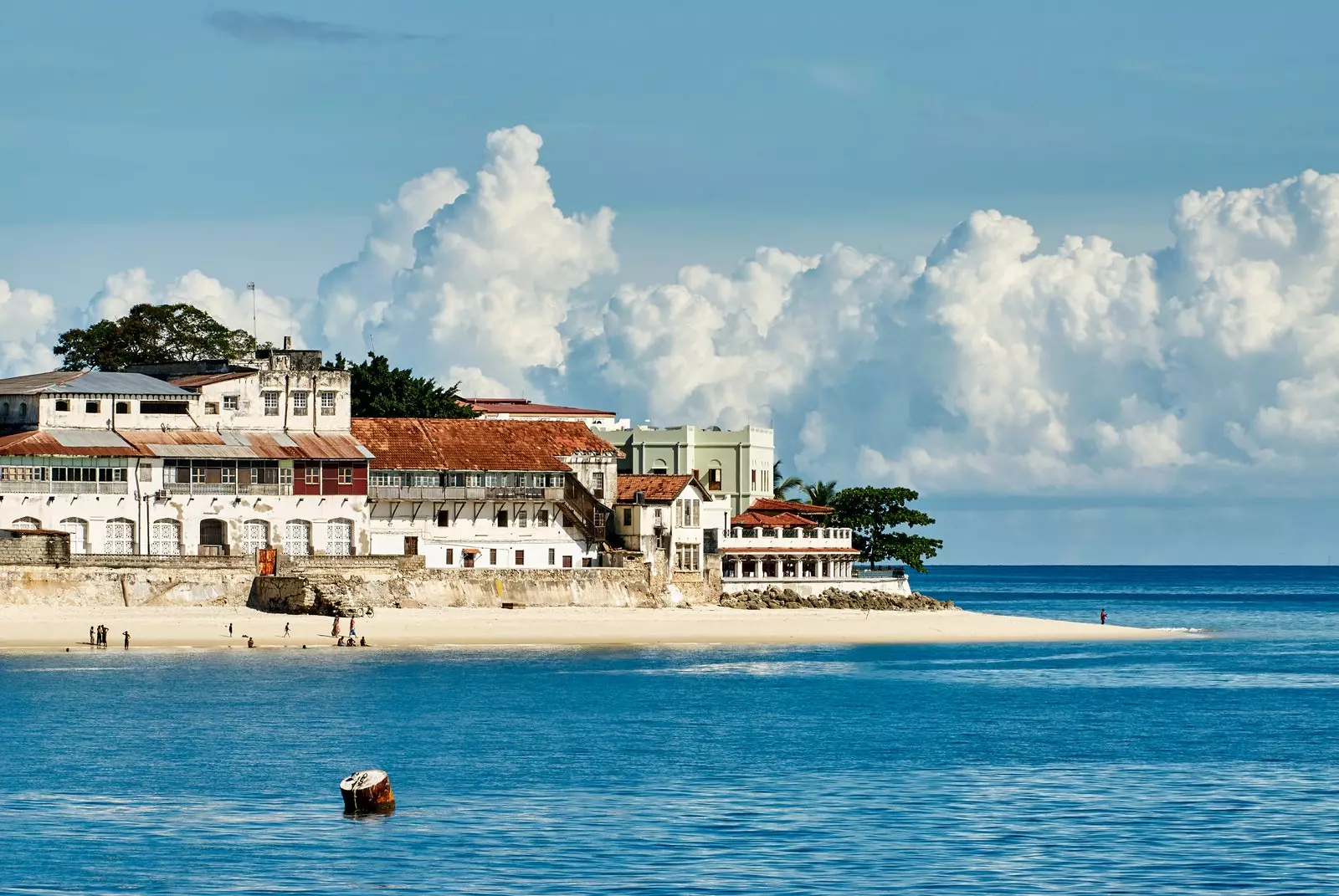
A beachfront building in Zanzibar Town.
THE HEART OF THE SERENGUETI
In Susan's words, the fastest way to get to the Serengeti from Zanzibar is with a couple of charter flights, over three hours, passing over Arusha (home to mystical Mount Kilimanjaro and gateway to northern Tanzania's safari parks).
Nevertheless, not in the destination what I think about while I observe the spectacular landscapes that unfold under the plane : Tiny emerald islands parade before my eyes against the vibrant blue of the Indian Ocean, transforming into dark green plains shadowed by scattered clouds, followed by impressive mountains that plunge into a lush valley.
The pilot points the ngorongoro crater, a vast and thriving volcanic caldera known as the African Garden of Eden, which I will visit later, and the earthy browns of the Olduvai Gorge, where the oldest traces of human activity in the world are found. It is exciting to behold a land of such antiquity and diversity from a bird's eye view, and to see it in a way that our ancestors never could.
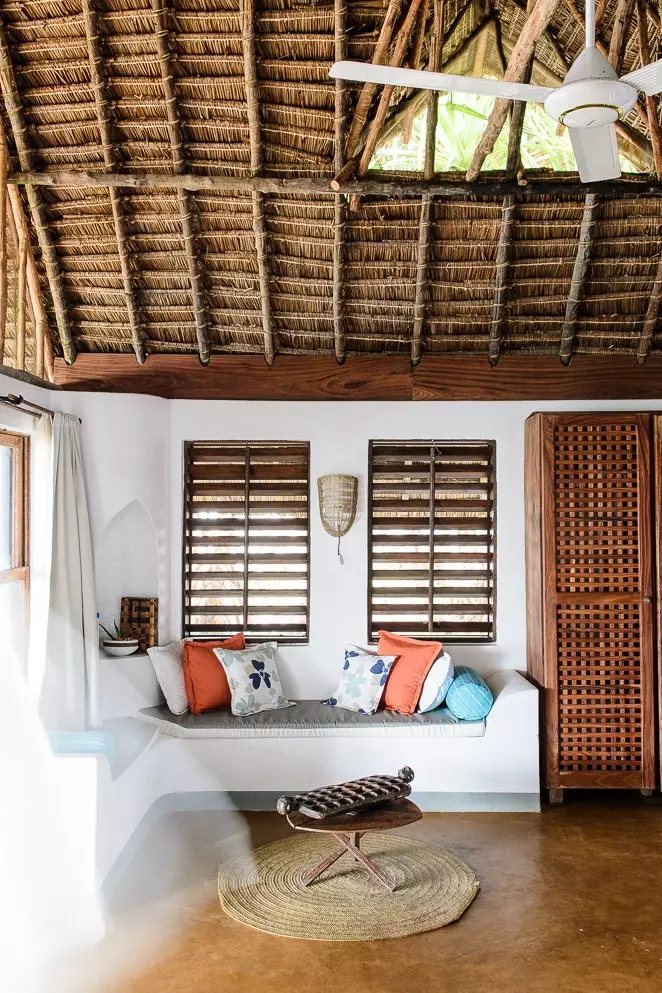
Interior of one of the rooms at the Matemwe Lodge, Zanzibar.
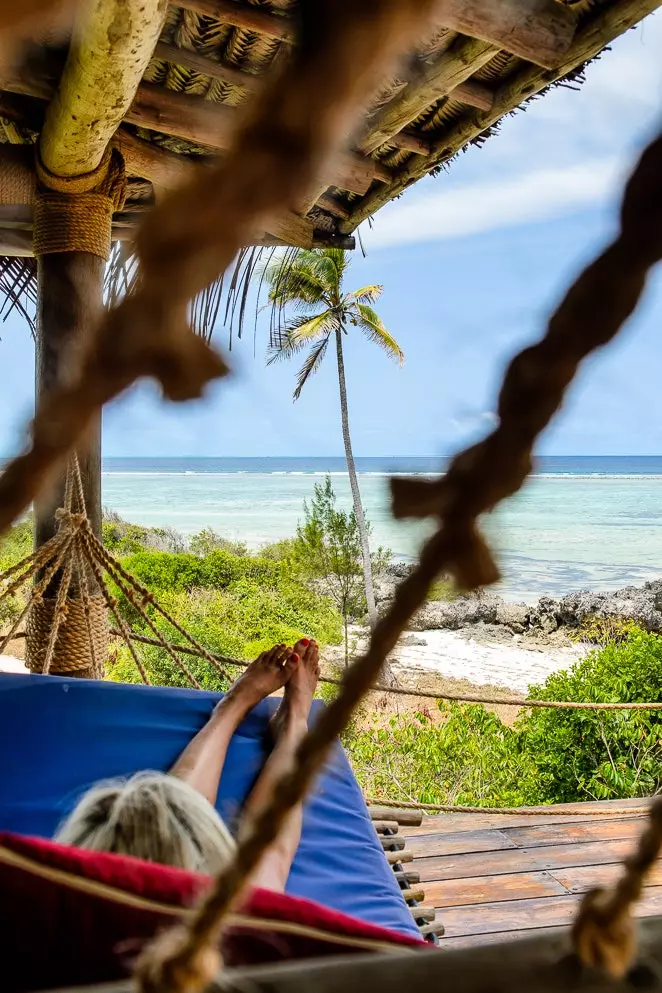
Guest rests in a hammock at the Matemwe Lodge.
The Central Serengeti is a land of legend , known for its sudden sightings of animals and for hosting the largest number of camps, and therefore jeeps, in Tanzania. I arrive at the small airport of Seronera, in the Serengeti National Park, and I am greeted by the beaming Daniel Clement, my Tanzanian safari guide and camp driver Namiri Plains of Asilia.
THE IMPORTANCE OF A GOOD GUIDE
As I settle into the open Land Cruiser, Daniel points at me. some warm Maasai blankets, a fly swatter and an Asilia parka in case of seasonal showers, and he tells me there's beer in the fridge for me to drink while he does some airport errands. The beers have some wonderfully chosen names: Safari, Serengeti and Kilimanjaro. "If you can't climb Kilimanjaro, you drink it" Daniel jokes. At least the beer has just the right amount of sweetness.
It is exciting to behold a land of such antiquity and diversity from a bird's eye view, and to see it in a way that our ancestors never could.
Namiri Plains they are almost two hours from the airport, so Daniel suggests that we take a safari along the way so as not to waste the afternoon. He asks me what I want to see and I show him the list of essential things that my eight-year-old nephew has prepared for me, and he keeps it in mind throughout my stay.
Termite mounds are high on the list, towering well over my five foot height, so Daniel offers to shoot a quick video on my phone. From that angle, in the recording you can admire the network of tunnels that regulate the flow of air to the underground chamber, where the queen breaks a sweat laying more than 20,000 eggs a day.
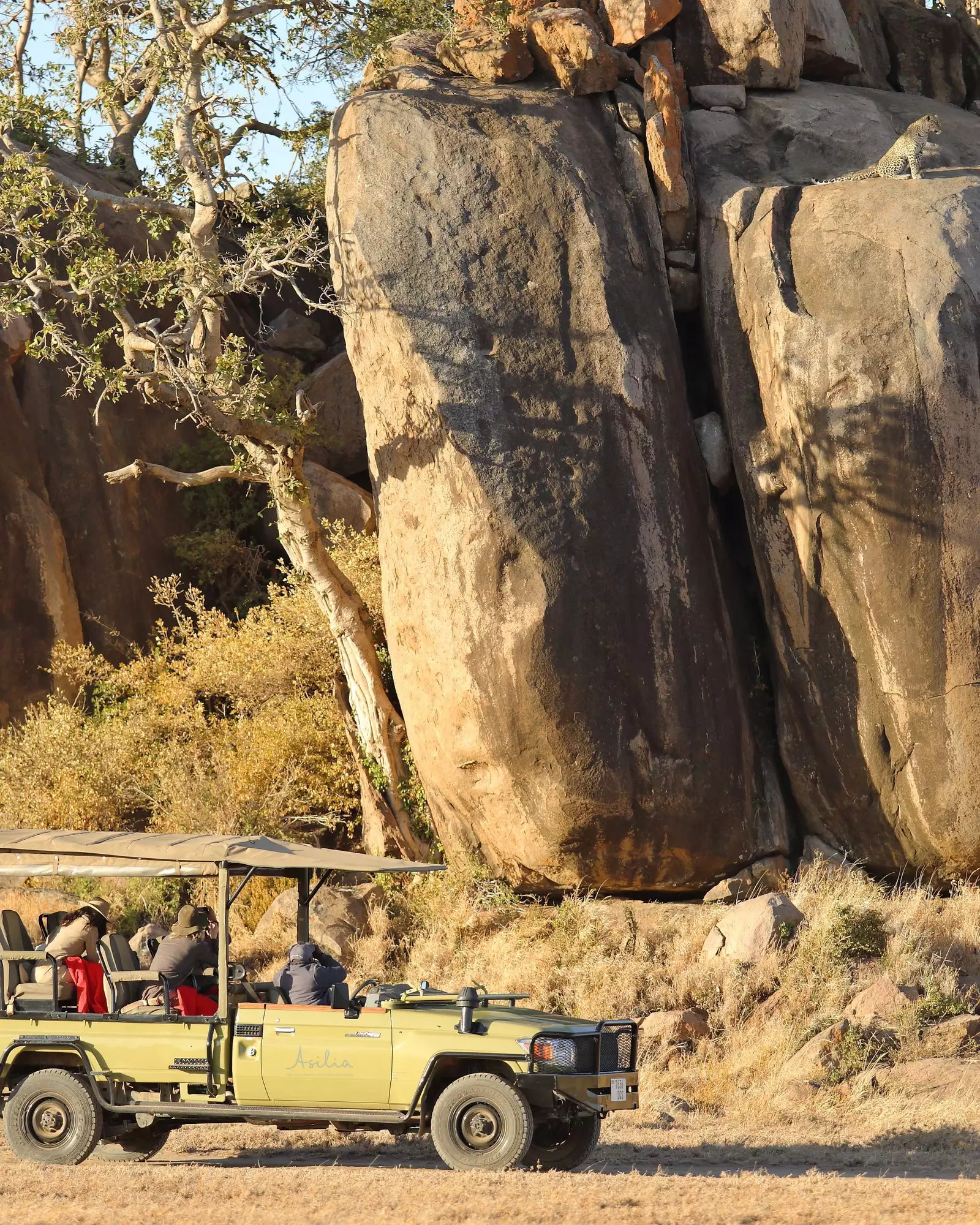
A drive through the plains of Namiri.
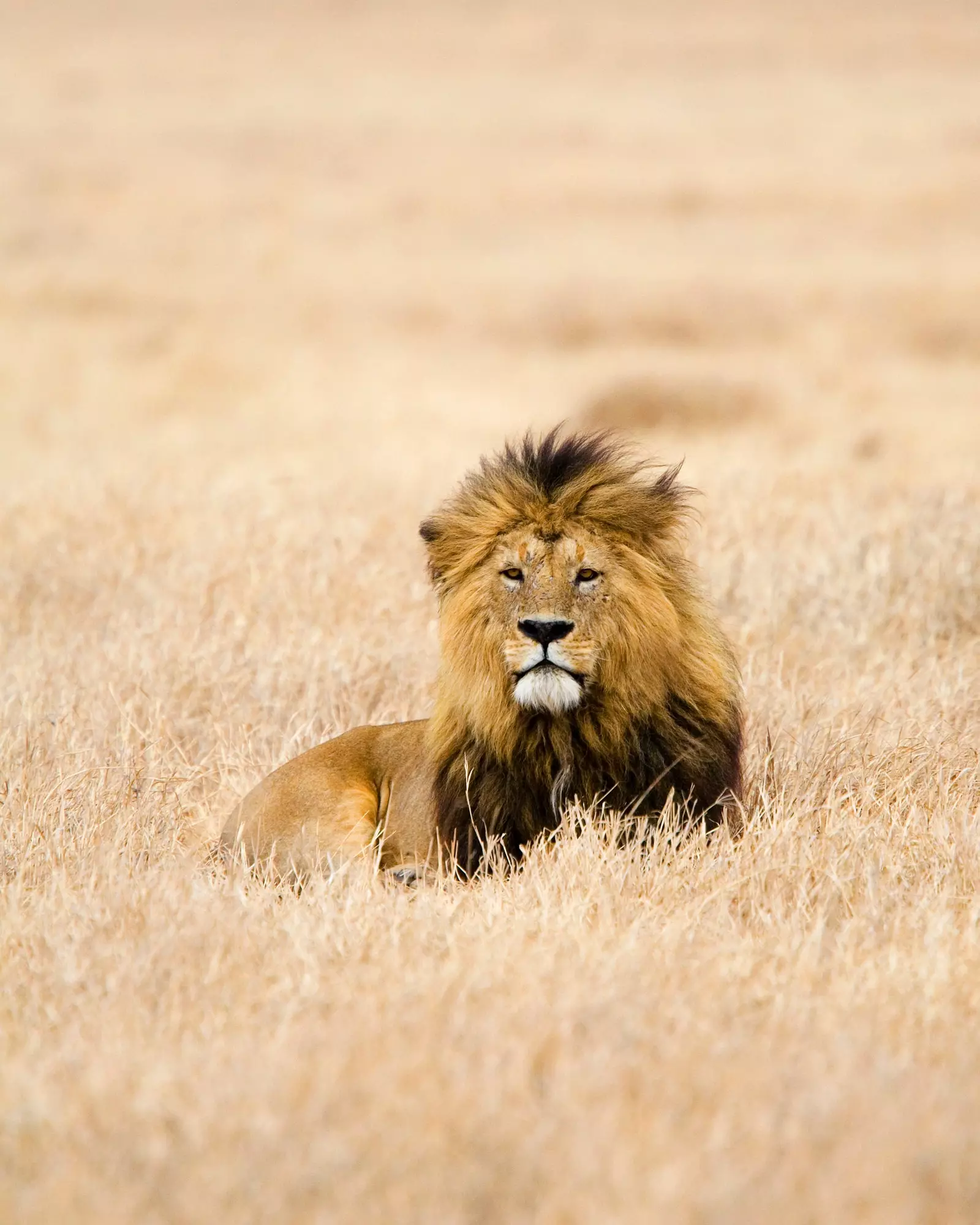
A lion surveys the surroundings in Serengeti National Park.
A TOTAL IMMERSION IN THE WILDLIFE
In a couple of hours I see more wildlife than in any other safari I have done in India . With the jeep to myself and Daniel as my guide, it feels like a VIP access experience. The details of the landscape that Daniel points out are magnificent: the buzzards (the largest in Africa) huddle in their nests in the trees; a male ostrich exhibits a deep red hue indicating that it is ready to reproduce; the whistling thorn exposes its swollen quills and the nectar of its leaves, which invites the ants to settle in it and protect it from hungry animals; a fire lizard raises its head to ask for a female's consent to mate; the hyenas, always so histrionic, crouch down, ready to fight.
We join a group of five jeeps surrounding four lionesses panting in the heat, each changing places from time to time so everyone can enjoy the picture. For this alone it would be worth the trip, but we have only just begun.
Namiri Plains is located in Soit Le Motonyi , in the eastern part of the Serengeti. The region was closed for twenty years, until 2014, to increase the cheetah population, and this camp was the first to open it up to travellers, having partnered with the Serengeti Cheetah Project as a conservation initiative.
Being so isolated, the camp allows you to enjoy intimate and spectacular views without losing an iota of luxury, with a spa, outdoor pool next to a library in which it is exhibited the skull of the legendary lion Bob and elegant tented suites, which feature a bathtub with views of the jungle. It is the paradise of safaris.
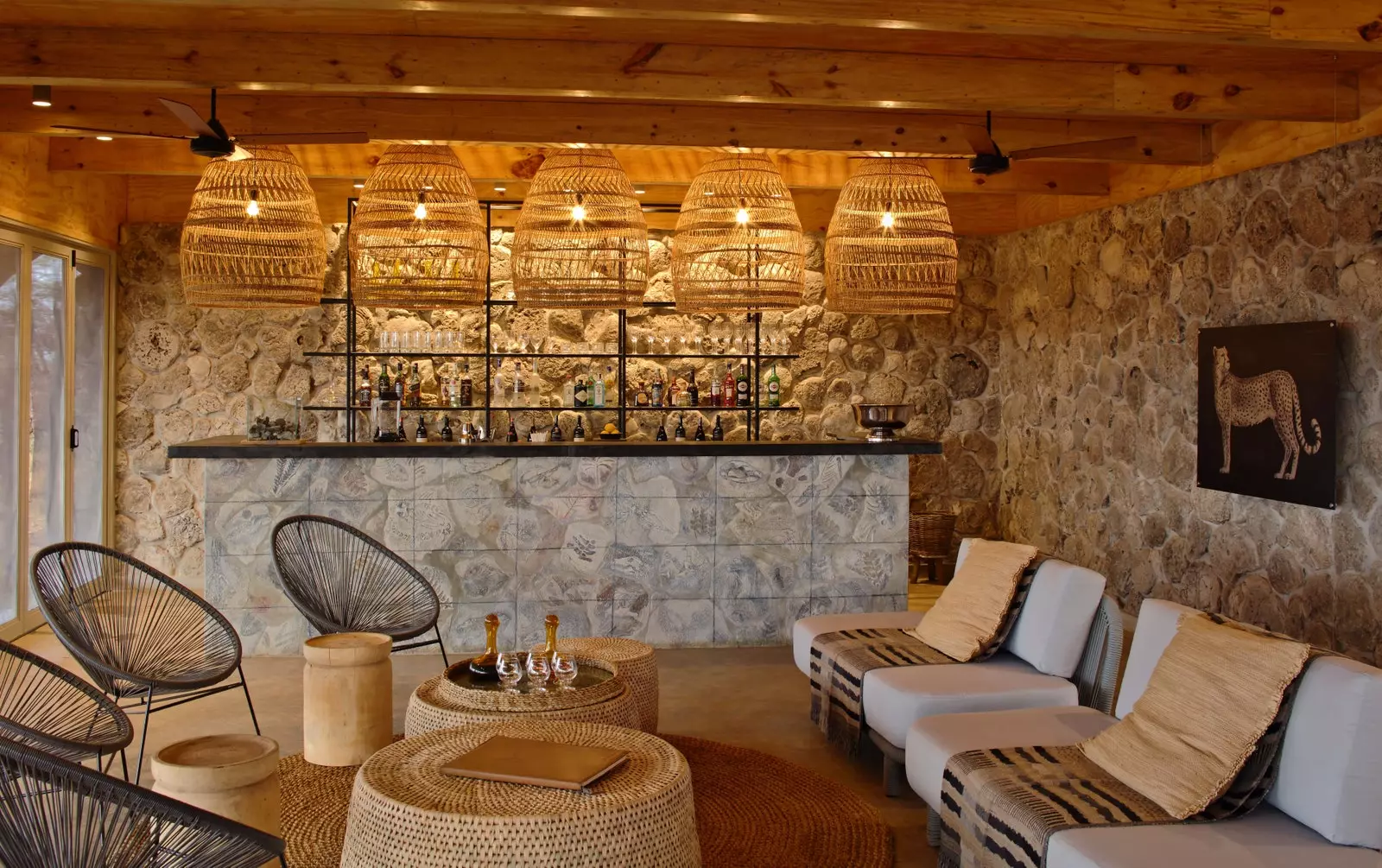
The Namiri Plains bar, where guests gather every night.
THE TANZANIA SAVANNAH
The Serengeti grasslands are vast, wide open plains, their flat outlines broken by acacia trees, termite mounds, and rocky outcrops scattered here and there. a landscape of a wild beauty that transmits a strange peace, with its ocher-maned lions and hidden cheetahs between the golden blades of low grass, clouds that form surprising figures in the sky and a curtain of rain falling perpetually on the horizon.
With its titanic proportions, the savannah is made to dream big and feel free. After more than a year of almost always being in front of a desk, I realize how much I missed these places, the need with which I drink from the fiery sunrises when we go out by car and the opulence of life in the surroundings.
asilia has a rigorous guide training program, beyond Daniel's tourism diploma, part of which involves guides rotating between camps to broaden their knowledge. Daniel, who has worked as a guide for eight years, two of them with Asilia in the northern Serengeti, has only been in the Namiri Plains for six months, but he already knows the best places.
We are often the only ones to attend a sighting, an experience made even more exciting by being in an open Land Cruiser. There is something special about the silent exchange of glances with an animal, a hint of its mood and personality, a spark of connection that is usually only experienced with a human. For a moment, time seems to slow down and a deep connection with nature is felt.
After more than a year of almost always being in front of a desk, I realize how much I missed these places, the need with which I drink from the fiery sunrises when we go out by car and the opulence of life in the surroundings.
UNFORGETTABLE SIGHTINGS
Although Daniel warns that An elephant going through the must can be volatile and aggressive, it is a wonderful experience to meet one in a calm moment: he fixes his long-lashed eyes on us, but he is so sleepy that he can hardly support his weight against a tree.
Another morning, we are the only witnesses of a cheetah successfully taking down a gazelle. Lost in the hypnotic beauty of his movements, I am even more impressed when Daniel tells me that Cheetah females are solitary and have larger territories than males.
Although they are the fastest land animal, their speed is explosive and the energy expenditure leaves them vulnerable to other predators, so they have to eat quickly and escape. Fewer than 7,100 wild specimens remain; it is almost impossible to breed them in captivity and now they are practically clones without genetic diversity. It is disturbing to think that a creature of such sinuous grace is vulnerable to extinction.
This intimate access to nature is surreal, and the morning Daniel decides to drive through the center of the Serengeti to the Dunia Camp from asilia That's when I feel like my eyes have been completely opened. For the next several hours, we are the only humans to witness the lionesses pampering their cubs. amidst an orchestra of exasperated maternal grunts and hungry meows.
According to Daniel, the fauna is accustomed to the jeep, since the mothers are not disturbed when they see them and therefore neither are the young. The vehicle is our safe conduct; it masks the threat of our unfamiliar smells, and everything is fine as long as we don't make any sudden movements or loud noises. Still, it's overwhelming, especially when a lioness decides to lie down next to the jeepalmost at our feet.
Daniel places a kitchen towel on the armrest and opens containers with delicious salads, quiches, muffins, eggs, sausages and bacon, and prepares delicious Tanzanian coffee. Finally, the two males lazily drop into the shadow cast by our jeep, which is suddenly in the center of the pack. It is a moment of impossible harmony, even cozy, a surreal and unforgettable breakfast.
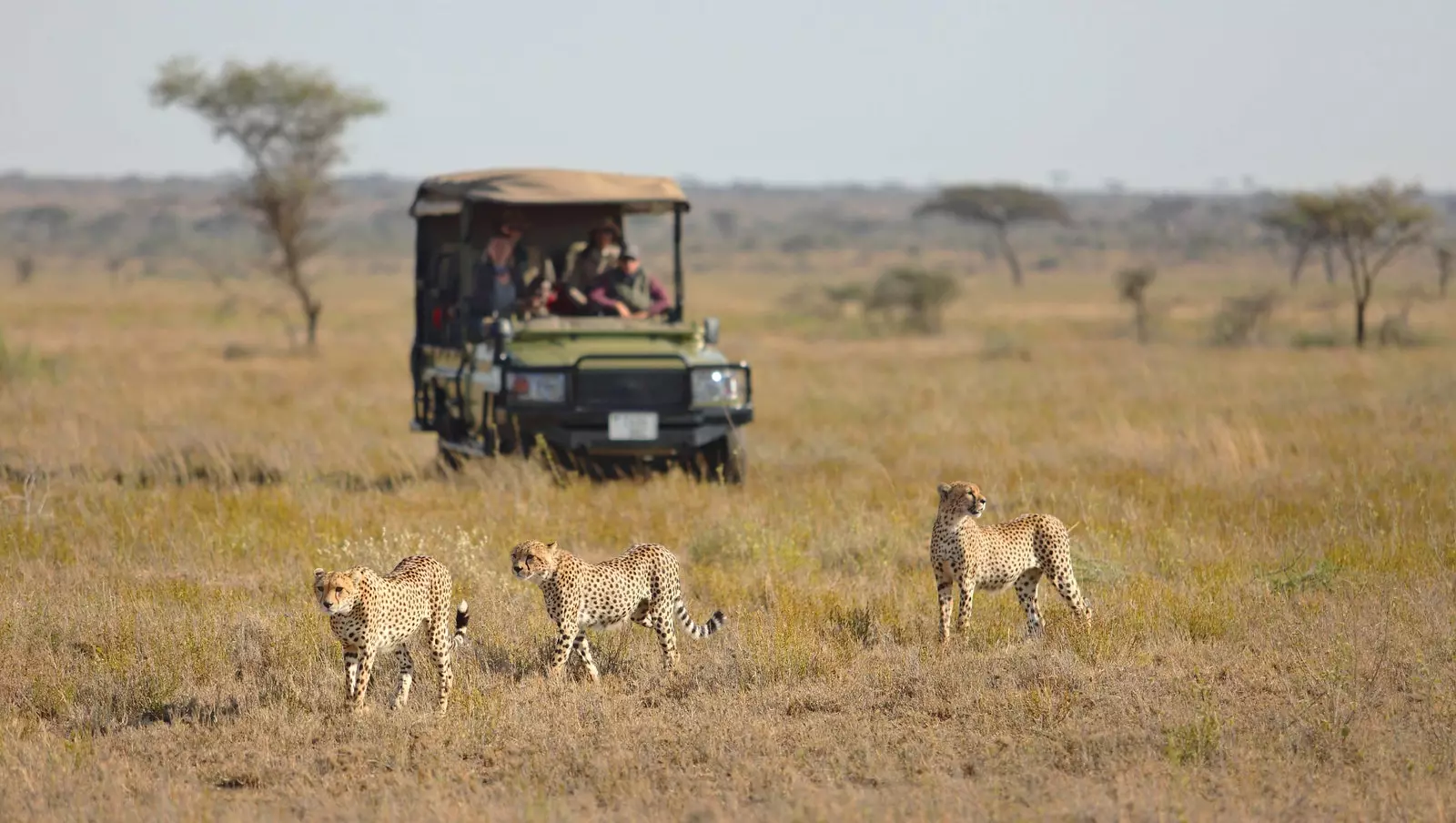
Cheetah sighting during a safari in Namiri.
EXPLORING NGORONGORO
The journey to the elegant Dunia Camp would have been worth it just to see the first women-led camp on the continent (where they welcome me with the best songs and dances of the entire trip) and for appreciating their forest full of hippos, giraffes and impalas, even more so when we come across the first hundreds of nearly two million wildebeest and zebra heading south through the Serengeti ecosystem, after the rainy season. It is the largest undisturbed animal migration in the world, and it is impressive to see even if it is only a preview of the event.
The wildebeest, with brown fur that give off blue reflections, move unstoppably like the wind across the plains: Their loud braying is mixed with the high-pitched neighing of the equally skittish zebras, which form ever-moving tapestries of stripes. As we head back to camp for my last bush TV (cocktails by the campfire with fellow guests), I know that months later, when I return home, I'll still be wondering what wonders are taking place in the Serengeti right now.
The Ngorongoro crater, which is also part of the Serengeti ecosystem and reached after a forty-minute flight from the Seronera airstrip, It is the largest intact volcanic caldera in the world. . It is the largest of the nine craters that formed in the highlands when a volcano that would have rivaled the Kilimanjaro it collapsed 2.5 million years ago.
At Lake Manyara airport my guide and driver Festo Kiondo, from the camp The Highlands, He's waiting for me in a closed-top Land Cruiser, with ginger ale and snacks ready for the two-and-a-half-hour drive to camp. We stop at the crater lookout for a glimpse of the lush, cloud-shrouded caldera.
Once at The Highlands camp, safari is the last thing on my mind when I see the geodesic dome with its cozy wood stove, its fur blankets and its Plexiglas facade with views of the sunset in the mountains. I look away from the sights to discover that Assistant Head Waiter Eric Matiko makes the best cocktails, like a Highland buttered rum with rooibos and cinnamon, which warms the body on chilly Highland nights.
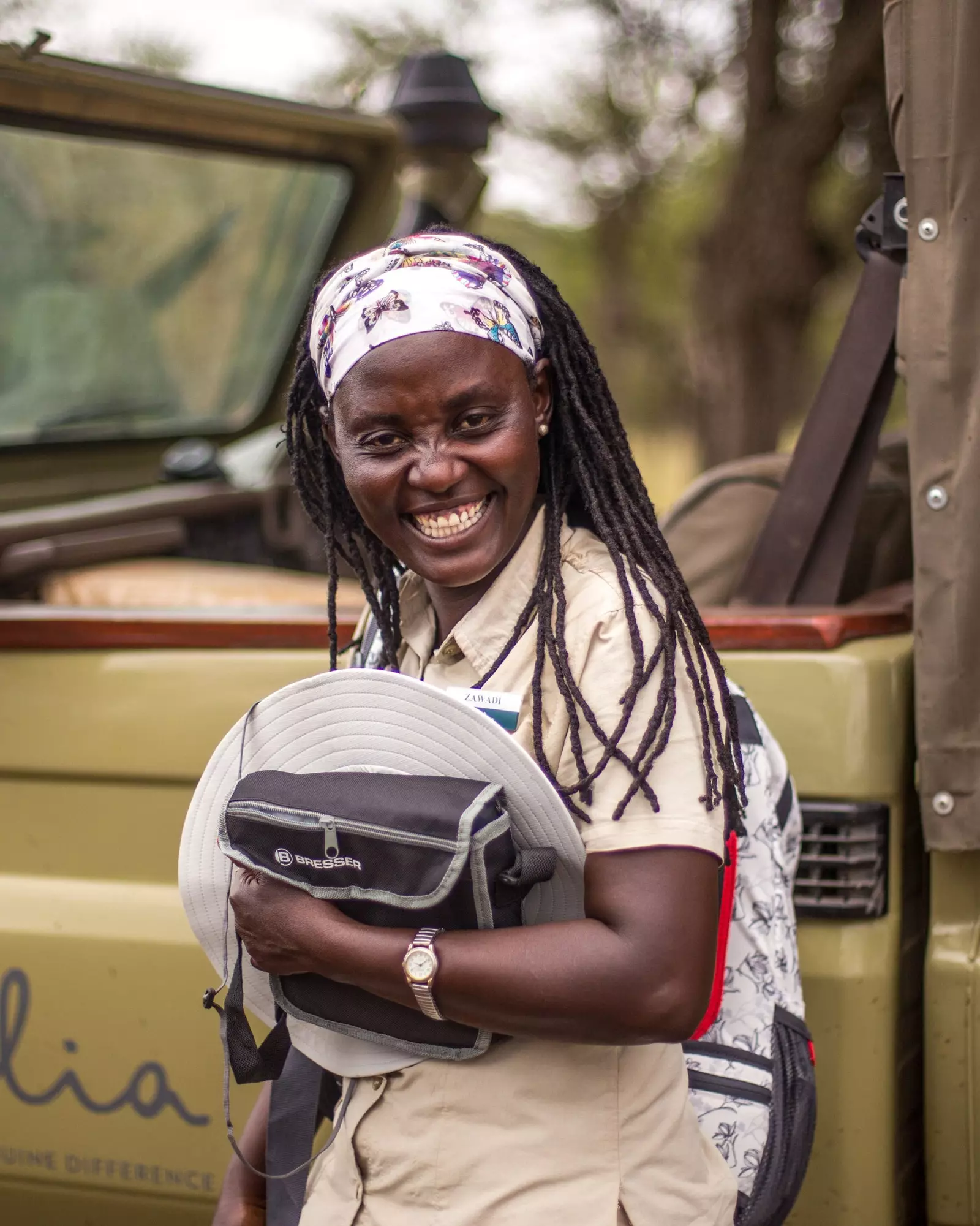
Zawadi, one of Dunia Camp's staff members, prepares to go on safari.
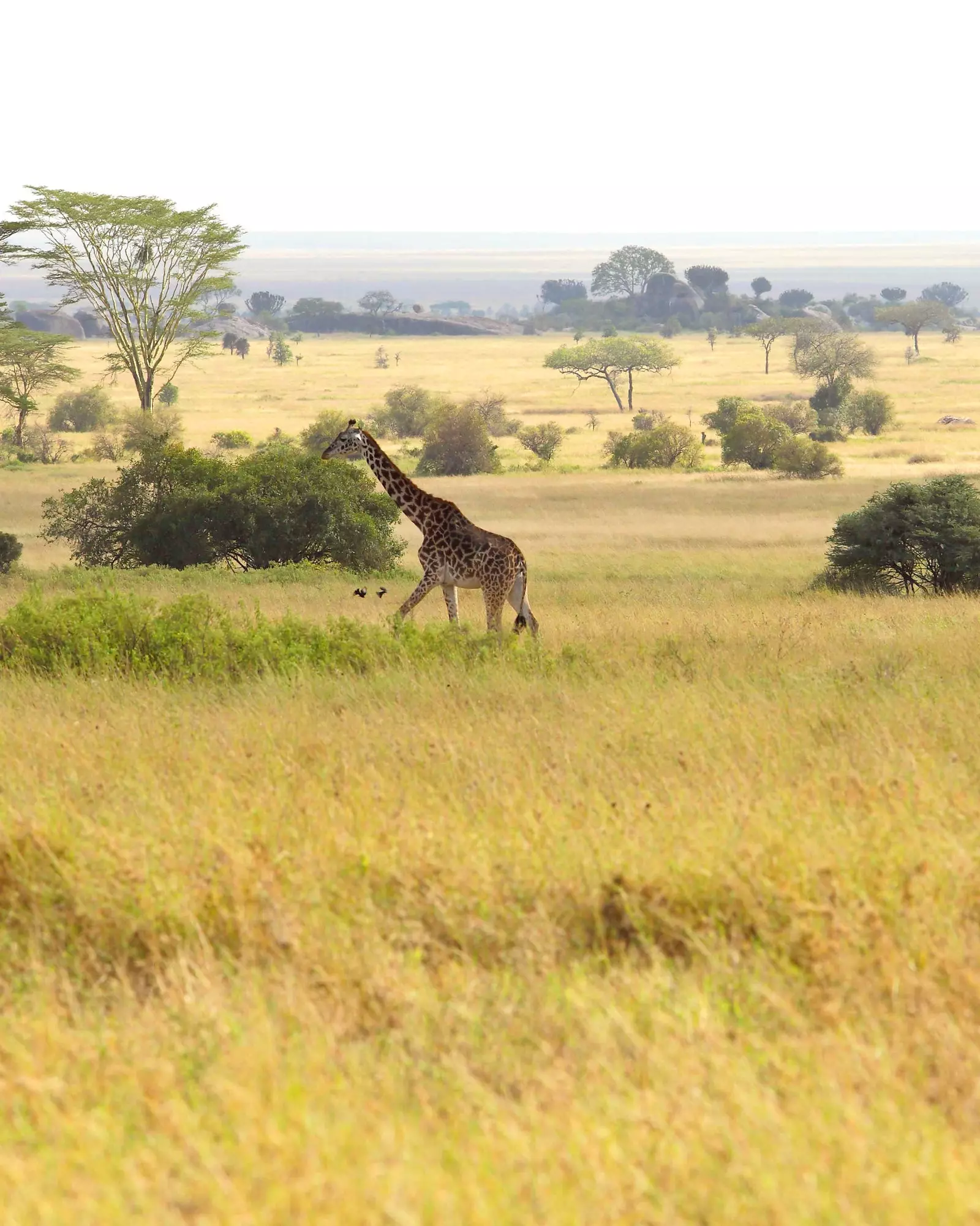
Giraffes in the Serengeti.
It is essential to have an experienced guide, especially considering the number of jeep What's in the crater? Festo has a degree in Tourism and has worked in seven national parks and the Ngorongoro Conservation Area for nine years. He immediately looks for vantage points from which to observe the African aningas and the Greater Peaked Oxpeckers on the backs of the submerged hippos, and he knows of a secluded corner in the crowded picnic area for our picnic of fried chicken and rose wine salad.
Being the only jeep in a regular place of passage for elephants, we experienced an incredible moment when a huge male in full must attack a herd. The sound of the bars explodes in the air; when a couple of jeep They stop next to us, I have goosebumps . Festus explains the situation to us as the male ignores the matriarch and sniffs for a female in heat, and is joined by another smaller male.
The reverberation of the barritos and the tension between the herd and the males are overwhelming. But today is not their day, and after fifteen minutes the herd continues on its way, leaving the males to rummage in the dirt while a sigh of relief runs through the group.
THE RICH WORLD OF THE MASAI
The mountains are an imposing setting for the rich wildlife. As we head to the Empakai crater, less frequented, to take an excursion, I look up and see a jackal perched on a cliff; he's not a big cat, but there's a subtle majesty to his pose as a cumulus cloud casts sunlight onto his fur, striking incandescent reflections.
In the Maasai language, ngorongoro is the tinkle of cowbells, and a characteristic spectacle is that of the zebras grazing next to the cattle; they feel safer around herders and tend to follow cattle to the barn. The Maasai believe that their cattle are a gift from the gods and do not eat wildlife , explains Peter Mwasuni, a Maasai guide from The Highlands, who has been at the lodge since it opened in 2016.
On the way to Empakai, he points out Tanzania's third-highest mountain, Loolmalasin, distant cloud-shrouded Kilimanjaro, and northeast of the edge of Empakai, the active volcano Ol Doinyo Lengai, the mountain of God of the Maasai . It is the only volcano in the world that spews carbonatite lava, which cools quickly and turns white.
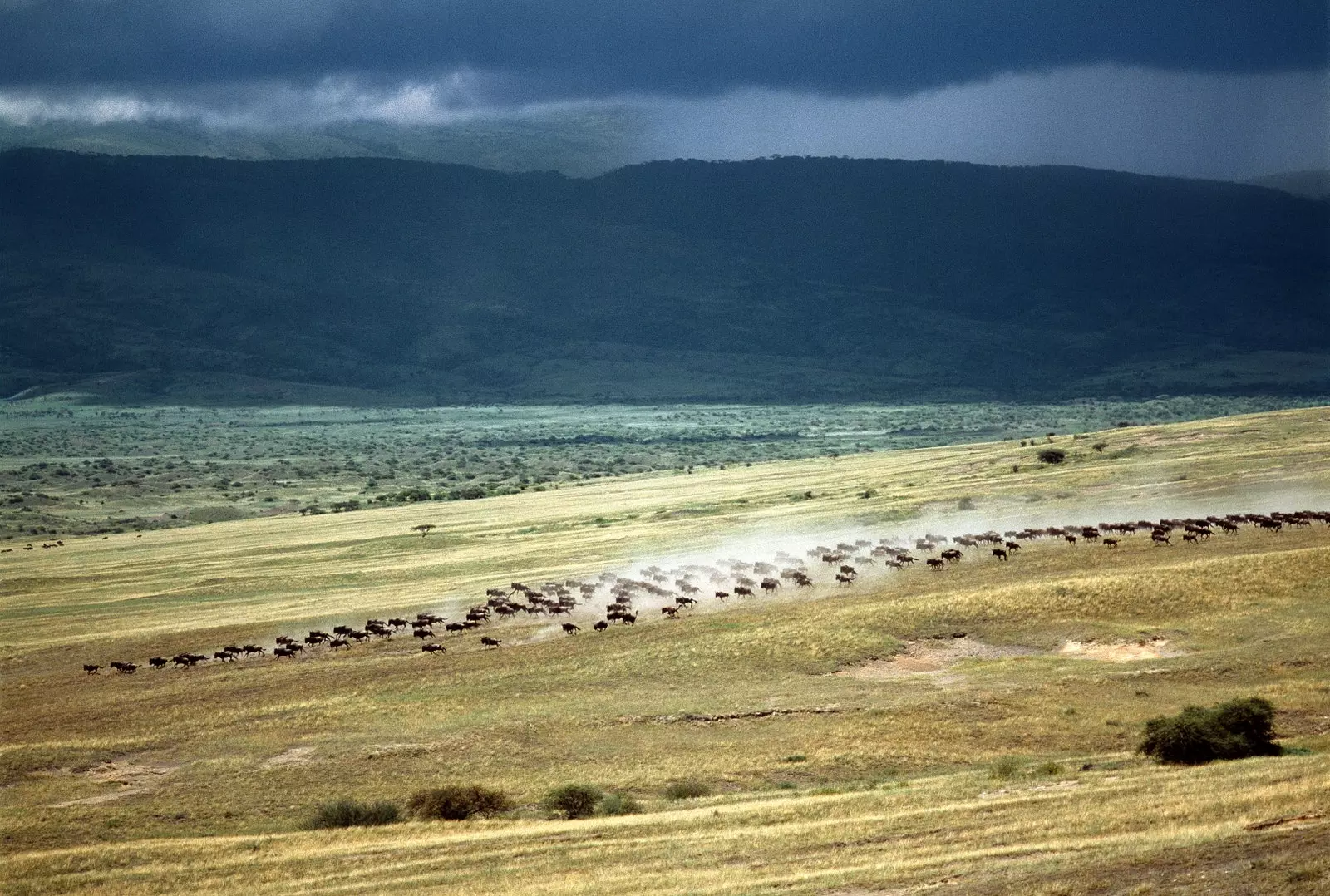
Wildebeest stampede on the dry grassy plains on the west side of the Ngorongoro Highlands.
It's a beautiful day, the sky is clear, and the alkaline lake at the bottom of the Empakai crater is dotted with pink flamingos. The climb is steep and the pace slow, but Peter and the armed ranger who accompanies us, Alais, tell us about Maasai life and point out appetizing but poisonous berries, shy blue monkeys and the matapalos that the Maasai consider sacred.
When we reach the middle of the climb, the cows have already occupied the place that we have left free next to the lake. The climb to the crater is unusual for safari goers but it has some stunning scenery and in conjunction with Peter's guided tour of the Maasai village, with its warm bahareque huts, offers the opportunity to see an ancient tribe living with wildlife.
It has been one of those rare trips in which well-laid plans have turned out even better than expected, in which each day has been so interesting and free of complications that the feeling of having lived them to the fullest remains, and that they create memories so vivid you know you'll revisit them in your dreams.
I thought the long drive back to the airport would be sad, but Festo has captured my love of music. He puts on songs that he's liked lately during my last drive through the stunning scenery, translating the lyrics into Swahili and talking about the spread of the South African Amapian musical movement throughout the continent. It has been one of those rare trips where well-laid plans have turned out even better than expected, where each day has been so interesting and free of complications that the feeling remains of having lived them in all their fullness , and that create memories so vivid you know you'll revisit them in your dreams.
THE MOST OUTSTANDING
Day 3: After months of confinement, a day in the hammock and swimming pool in a villa facing the sea in Matemwe Lodge It was a completely restorative immersion in nature.
Day 4: When you take a charter flight from zanzibar to serengeti Over ancient and immensely diverse landscapes, traversing ocean, lakes, mountains and savannah, the journey is as rewarding as the destination.
Day 6: Breakfast with the lions (only with the lions) in the Serengeti is the kind of impromptu safari experience that is part gift from the jungle and part the skill of an experienced guide. And witness the first advance guard of the great migration!
Day 8: To be the only human witnesses to the disturbing and startling furious trumpeting of a herd of elephants in the Ngorongoro Crater. I still get goosebumps!
WHAT MADE THE DIFFERENCE
Susan explained the entire trip to me step by step in her pre-departure briefings. A specialist in travel to Africa, born in South Africa and who has often traveled alone, she had the good sense to anticipate the needs that might arise during a first visit to the continent. She gave me details about everything, from completing COVID-19 formalities and taking anti-malaria medication to transporting hand luggage for charter flights, dressing in neutral tones for the safari and taking one last COVID-19 test in the Serengeti in time for my return flight. Also, all the tickets and travel information were on the TravKey app, which I was able to access without coverage. All I had to do was show up at the airport on the day and at the time indicated.
This article was published in the January 2022 International Edition of Condé Nast Traveler.
